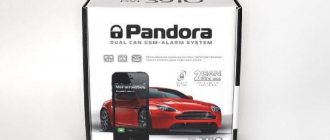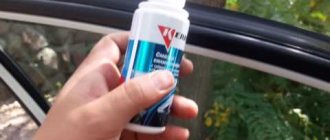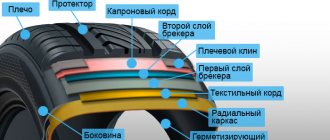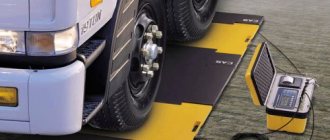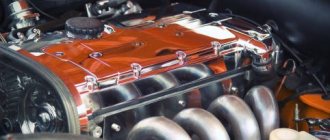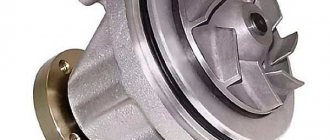How long does car putty take to dry? Putties are different and their layers are not the same, and the drying conditions may also be different. Therefore, it is not easy to say exactly the number of minutes. Approximately 30 minutes at a temperature of 20-25˚C and using a universal composition with a hardener. But there are also exceptions.
What is car putty?
Before you figure out how to dilute putty and apply it yourself, you need to understand what you're dealing with. The very formulation of the concept of “putty” is enshrined in the state standard GOST 28246-89. This is a paste or liquid multi-component material used to eliminate defects on the surface of a part before painting it directly.
The composition includes the following components:
- Resins. The basic component of the mixture, on which adhesive properties, strength and other characteristics depend.
- Fillers. Additional components that form the specific properties of auto putties, for example, ease of processing, level of shrinkage, etc. They use glass and carbon fibers, chalk, talc, aluminum or zinc powder.
- Solvents. This is about a third of the total volume of the mixture. Deviation in any direction affects ductility and the degree of shrinkage. Any solvent itself is saturated with volatile substances, which evaporate as the putty dries, reducing its volume.
In practice, the following types of auto putty are used.
| Kinds | Characteristics |
| Filling. | Coarse-grained putty, the instructions for which stipulate application to a metal surface or a reinforcing reinforcing mass. Characterized by the possibility of pores forming after application. |
| Reinforcing. | It differs from the previous type in its increased content of fiberglass fillers. It is used if it is necessary to eliminate large defects (dents, scratches, corrosion damage, etc.). |
| Finish. | A fine-grained paste that is used to finish surfaces treated with a base coat of putty. Perfectly hides pores. |
| Putty for plastics. | Specific fine-grained masses that are used to seal cracks and scratches in plastic parts. |
| Sprayable. | A liquid mass that is applied to the surface using spray guns. Used to eliminate defects over large areas. |
| Acrylic. | One-component putty for treating small defects. The instructions say that it can only be applied in a thin layer. |
Automotive putties have different viscosities, which affect the complexity of application.
What sandpaper should I use to sand car putty?
After drying, the first layer of automotive putty is traditionally sanded with P80 sandpaper. This is a fairly coarse-grained sandpaper, but it can be used to roughen the bottom layer conveniently and quickly.
Further, the grain increases by an average of 100 units with each subsequent processing. This is the so-called “rule of one hundred”. That is, after the first rough grouting, paper with a grain size of P180 or P200 is taken. Then we increase it to P300-400. We can stop here. But if a perfectly smooth surface is required, then it would not be superfluous to use finer-grained sandpaper.
After sanding, it is recommended to rinse the treated surface with water.
How to maintain the correct proportions
Now you can consider the issue of diluting putties. This must be understood before starting work. So, how to dilute putty? Any putty should come with instructions for its use, which, among other things, indicate the proportions to which the mixture should be diluted. The dilution process involves adding a hardener (catalyst, activator) to the bulk of the contents of the tube. It must be supplied with auto putty, and it just needs to be diluted correctly. Its addition is regulated to ensure faster drying, since otherwise the process may be delayed.
The amount of hardener added depends on the scope of work. If, for example, the entire volume of putty mass is expected to be used, then the entire tube can be added. It must be remembered that the mixture obtained in this way quickly hardens even in a packaging container, so the remains will have to be thrown away.
If you need to use some of the putty, then you need to strictly follow the proportions dictated by the instructions. If for some reason it is not available, then most likely you need to focus on the following ratio: 1 part hardener to 100 parts base.
During the stirring process, it is necessary to eliminate two typical mistakes:
- Add hardener immediately in full. The instructions say that even if you plan to use the entire volume of putty, you must add the activator to it gradually, in portions, thoroughly mixing the mass. The hardener itself has indicator properties: when the level of dissolution is insufficient, characteristic pink streaks or stains are visible in the mass.
- Solvent addition. A major mistake, which ultimately leads to the fact that, at best, the applied putty becomes covered with tubercles and bubbles, and at worst, it simply runs off.
Once the mixture is ready, you can proceed to its direct application.
How to dry putty on a car body?
We decided to repair the body of our car ourselves using putty. How to dry putty on a car body?
comment to favorites Kim Jong-un [412K] 5 years ago
There is no “drying the car putty with something” in the process called “car body putty.”
There is no need to dry the putty with anything.
It is also important to know specifically what kind of putty we are talking about.
There are two-component putties for car bodies, they dry within 10 minutes, after 40 minutes the putty can already be sanded and prepared for painting.
If the putty rises (dries out) slowly, then the mixing ratio is incorrect.
Auto putties come with instructions that clearly indicate how much hardener needs to be added to the putty.
If you add less, you will have problems, just as if you add too much hardener.
In order not to disrupt the natural moisture exchange regime, I do not recommend artificially drying the putty on the body.
It (the putty) may crack.
The putty should dry easily at above-zero temperatures and normal humidity.
It is important not to rush here; speeding up the process will create problems.
If you are not convinced, then you can use a hair dryer.
moderator chose this answer as the best comment add to favorites link thank Irani ka [65.3K] 5 years ago
No special methods are required for drying the putty applied to the car body.
The putty must be applied in the manner specified in the instructions for its application by the manufacturer and in no other way.
Before applying the putty, you must thoroughly degrease the surface of the body on which the automotive putty will subsequently be applied.
A one-time layer of putty should not exceed the thickness recommended by the putty manufacturer, otherwise, after drying, the area treated with too thick a layer of putty will crack, which is absolutely unacceptable (!).
If you need to apply a second layer of putty, you need to wait until the previous layer has completely dried, and only then apply a new one on it.
Again, the drying time of the putty on the car body should be no less than that specified in the instructions for use of the specific type of putty that you will use.
If you do not comply with all the conditions for the correct application of putty, then repairing the car body yourself can cost a pretty penny, if the result turns out to be completely different from what you expected, and it will have to be corrected by professionals from a car repair shop.
Do-it-yourself work with putty
Applying putty with your own hands is not as complicated a process as it might seem at first glance, especially if you need to eliminate minor defects. If you contact a car service center, most likely, even the correction of minor scratches or dents will hit your pocket hard. You need to start putting putty with your own hands by selecting tools and materials.
An approximate sequence of work is as follows.
- First, the surface is cleaned down to the base metal using abrasives or a grinding machine. It is necessary to remove dirt, paintwork residues, and rust. The surface should be matte.
- Existing chips, cracks, and scratches are also sanded to remove sharp edges and widen them.
- If rust has been removed, it is recommended to treat the surface with an anti-corrosion primer before filling,
- The process of applying putty depends on its type and the condition of the surface. In any case, it will be necessary to lay 3-4 layers to avoid excessive internal stresses and cracking of the mass.
- Allow the putty to dry for 10-15 minutes between each coat.
- After completion of the work, developing powder is applied to the surface to identify possible scratches and irregularities.
- Identified defects are eliminated with abrasive followed by coating with a finely dispersed mass.
- The final finishing layer of putty is applied with a rubber spatula. The excess is cleaned off with a fine-grained abrasive.
Do-it-yourself work is not difficult, but labor-intensive. It requires an understanding of how to dilute the putty, how to apply it, how long to wait for drying, and, of course, how to choose it correctly.
How to apply car putty correctly?
There are simply no universal answers to the question of how to putty correctly. Each master works in his own style. However, there are a few general recommendations that most bodybuilders adhere to.
- Work out in advance the question of which putty is best to eliminate the defect in your specific case.
- You need to prepare as much putty at a time as is required to treat one element or one defect. The hardener will turn the putty into a wax-like mass unsuitable for application in 5-7 minutes.
- Choose a spatula that is suitable for a particular case. There is no point in using a large wide spatula to stretch an area 3 times smaller than the spatula itself. The same applies to large areas of treatment: you should not try to pull them out with small spatulas.
- There is no need to try to immediately bring the surface to the ideal using only spatulas. The main thing is to fill the defective area well and carefully. And micro-irregularities and “snot” will be removed with sandpaper.
Experienced body workers work slowly, but without breaks within the framework of one defect.
Car puttying
Used for large body work, large dents or through holes. This putty is coarser and must be covered with finer putties. It is also much stronger than conventional putty and more difficult to process. Some craftsmen even begin processing without waiting for this putty to completely dry, because... then it is very difficult to process.
This is a standard fine-grained putty. Applicable in most cases. Sometimes it is covered with a finer putty, such as fine, but this is not necessary. Among the advantages, it is worth noting ease of processing and versatility.
It is finer than soft and is used as the last layer on top of coarser putties, and for repairing minor defects. It leaves virtually no pores and is very easy to process.
As a rule, it is of higher quality than soft putty. Although it sometimes has a coarser grain. Gives very little subsidence, is easy to grind, and is not afraid of vibration. Many craftsmen who perform car body repairs use it as the main putty in their work.
Putty intended for application with a gun. Of course, it is not able to give the same layer as a regular putty, but it can also be applied much thicker than a pore-filling primer. Despite the simplicity of the work, one must not forget that it is a putty and needs to be coated with primer.
One-component putty. It is used to seal very small defects or chips.
As already mentioned, applying car putty requires some skill. Because the car body is not flat (like walls, for example) and here it is necessary to derive the shape. Let's look at a few examples:
Why did the car putty stop hardening?
At first it hardened quickly, then after a couple of days it stopped setting. The first time I thought that I forgot to add the hardener in the rush, but the second time everything was clear with the hardener (I added more with a specialist), but it remained as lively as it was. It stands for 3 hours and does not set. what the hell is this?
Added 7 years ago
No, I didn’t cheat with anything. He took as much as he needed and immediately closed the jar tightly.
Best answer
Really nonsense. As an option, the hardener lay in the sun. and he doesn’t have any other options. (the painter himself) You also can’t put a lot of hardener, it will dry poorly, and later after painting it will sag.
Other answers
Something got mixed up, our painters don’t have time to smear it in the heat, it hardens after two strokes, so they put less hardener and spread it a little at a time so that they have time to smear it. Molar says if you added acitone or some kind of solvent to dilute it, then this can happen, then only in the trash can
I messed up the proportions. It will harden, but it's a matter of time.
If you add more hardener, it may not dry at all, and it’s the same with epoxy resin. (Do not add more hardener than normal)
To put it simply, a small amount of putty (on a spatula) requires a hardener approximately the size of a match head: [link blocked by decision of the project administration]
How long does putty take to dry: construction forum - repair and finishing of apartments, houses, cottages.
How long does it take for primer, rotband, putty to dry? How long does it take for primer, rotband, putty to dry? Today, many people undertake to do repairs in their home on their own. At the same time, few people have special training, and therefore a lot of questions arise during the repair process. So, during any repair you will have to deal with such building materials as primer, rotband and putty. All these materials are used for finishing walls and floors. When working with them, it is very important to know the specifics of their use, in particular their drying time. Let's look at each of these materials. Primer is an important part of any finishing work. It is a liquid mixture of various polymer binder components designed to facilitate bonding of the material to the surface. The primer is designed to prepare the surface before plastering or puttying walls, wallpapering or pouring floor screed. This material can protect metal from corrosion, reveal the texture of wood, or hide defects in concrete, brick or plaster. The drying time of the primer is usually indicated on the packaging, as well as the approximate consumption of this building material. If the manufacturer does not indicate the drying time on the packaging, then professionals advise letting the primer dry for 3-4 hours. Naturally, you should also take into account such indicators as humidity and air temperature in the room. For example, at temperatures above 25 degrees the primer dries faster, and if the humidity exceeds 65%, the drying time of the primer increases by 2-3 times. Rotband is one of the types of primer produced by KNAUF. It is intended for preparing surfaces such as gas and foam concrete, ceramic and silicate surfaces, as well as brick and others before puttying. Before applying rotband, a simple primer is usually used to clean and remove dust from the surface. It is important while the rotband is drying to ensure that the temperature in the room is maintained from 5 to 25 degrees, and that construction dust does not fall on the treated surface. The drying time of the rotband is affected by both the thickness of the applied layer and the temperature in the room. In any case, when it comes to pouring floors, it is recommended to begin further work no earlier than 6 hours after priming. In other cases, the drying time of the rotband can last up to 7 days. Most often, the next step in the interior finishing process is to putty the walls. This building material is sold dry, and it must be diluted exactly in accordance with the instructions on the packaging. Putty helps to fill in all the unevenness and cracks on the walls and make the surface smooth. You cannot store the putty diluted for a long time. The choice of a specific type of putty is influenced by the type of surface to be treated. Thus, acrylic putty is used for both facade and interior work, and silicone mixtures are intended for rooms with high humidity. The drying time of the putty also depends on the thickness of the applied layer. The putty hardens quickly, but then time must pass for the excess moisture to evaporate. Depending on temperature and humidity, a very thick layer of putty can take anywhere from a few days to two weeks to dry.
What layer of automotive putty can be applied?
Any body repair professional will tell you that the smaller the layer of putty applied, the better. It is better to carefully straighten the damaged surface first than to correct defects with thick layers of putty. Even if a thick layer of putty does not crack, it will cause more significant subsidence than a thin layer.
The safe thickness of putty is 3 – 6 mm. You can apply a thicker layer (taking into account the types of putties reinforced with glass and carbon fibers). To do this, you need to apply several thin layers with good drying and sanding between them.
When applying several layers of putty, do not degrease with a solvent. It will be absorbed into the putty and, later, after painting, will begin to evaporate, causing defects in the paint surface. It is better to blow dust from putty areas with compressed air and degrease with anti-silicone or other special degreaser that evaporates quickly. It must be remembered that the thicker the layer, the higher the likelihood of cracking.
Composition of putty with fiberglass
First, you should understand in more detail the composition of fiberglass putty. After all, its components endow this material with properties that improve the quality of car body restoration. Like any putty, fiberglass consists of a special resin, which is its base. It imparts plasticity to the material and participates in the polymerization reaction. The quality of the putty directly depends on the quality of the resin used for the production of putty. The second component of glass putty is small particles of fiberglass. They act as a filler and perform a reinforcing function during the crystallization of the entire applied composition. It is thanks to glass fiber that when applied to the surface the material becomes very hard, has a low degree of shrinkage and is practically not susceptible to cracking.
Following the advantages, it is worth saying a few words about the disadvantages of fiberglass putty. This material is more difficult to take into the desired shape when applied, so some experience is required to work with it.
Also, this type of automotive putty has a very low degree of plasticity, therefore it is not recommended for use on parts subject to bending and vibration. Traditionally, automotive fiberglass putty contains a solvent, thanks to which it takes on the desired consistency. Styrene is used as a solvent, which generally occupies up to 30% of the total volume of the package contents. Its evaporation from the composition leads to thickening and hardening of the putty. Evaporation is necessary after application, but it is not advisable to allow it to occur during storage of the product.
An additional component of fiberglass putty is a hardener. It is supplied separately from the material, mainly in tubes. The hardener is designed to be mixed with the base composition, as a result of which a chemical reaction occurs and the putty crystallizes.
I added too little hardener to my car putty, what should I do? SOLVED)
Universal putty, added a drop of hardener to about 3-4 tbsp. spoons. The putty did not acquire a pinkish tint after mixing. The temperature in the garage is low right now in winter, 1-2 degrees. I took the spatulas with putty home, overnight the remains of the putty did not harden, they remained like plasticine (What should I do now? The seller said the main thing is not to overdo it with the hardener, a drop for 2 tablespoons. It turned out I didn’t report. Will the putty dry out? Or maybe I can use something to dry it , a heater, for example? or maybe dilute the hardener and brush the putty areas?
SORY, MY MISTAKE)) Then I took home three spatulas that were not cleaned of putty and an aluminum spoon in the same putty) On the spoon there were remains of putty without a hardener, and on the spatulas I mixed it with the proportion that I wrote above. Well, I checked it on a spoon in the morning: like plasticine, and on spatulas: stone, ground it off with a knife for half an hour))) Everything is fine.
Application area
Fiberglass putty for cars is used mainly for restorative repairs of small area and depth damage to the body. It is usually used as a base for finishing coats. With its help, you can effectively repair small dents and even through holes in metal.
It is also worth saying that automotive putties with fiberglass from some manufacturers can be successfully used to repair not only metal parts. They can be safely used for application to wood, plastic, aluminum or concrete. Thanks to its high adhesion, fiberglass putty adheres perfectly to any type of surface.
Quality of final work
Quality depends:
- depends on what putty you choose. They are divided into many types, and prices vary accordingly;
- from preparatory work. Be aware that even the most expensive and high-quality putty will begin to crack if the surface of the body is poorly cleaned before applying a layer of the finishing mixture.
You can putty your car either yourself or entrust the work to professionals. True, not all car repair shops are conscientious about their work, and they also bill you for removing small scratches, as if they had completely restored the car.
Therefore, motorists are increasingly repairing small cracks and dents themselves. The main question that interests all novice repairmen is how long does it take for car putty to dry? If you have little experience, we recommend following step-by-step instructions that will help you achieve high-quality results.
Preparing to apply the material
There is a lot of controversy regarding how to properly prepare the surface of a car for applying fiberglass putty. There is an opinion that it can only be applied to pure metal. Others say that it is acceptable to use it directly on primer and old paint. One way or another, it is possible to understand this issue only by referring to the recommendations of the manufacturer who produced the corresponding putty.
The instructions for most similar materials indicate that fiberglass putty for cars can be applied to metal, primer, and paint. The only limitation is active primers, when applied to old paint, it should only be matted, cleaned of dust with compressed air and degreased. The same goes for bare metal.
It is important that gasoline should never be used as a degreasing agent. Regular solvents with grades over 600 are suitable.
Polyester putty does not dry!
I purchased polyester putty (I had never worked with this before) from NOVOL glass fiber putty with fiberglass (green). I tried to follow the mixing proportions as per the instructions. The temperature of the components when mixing was +20 degrees, but it subsequently dried in the garage at a temperature of +10 - +15 degrees for two days, in some places (
40% of the total area) it remained soft (if you press it leaves a fingerprint) and not much sticky.
I moved it home to dry, now it’s been lying at home for 2 days at a temperature of +20 - +25 degrees. Is that all a failure? Or is there a chance to dry it? Maybe a hairdryer?
Preparation of putty composition
Of great importance is the correct process of preparing automotive putty with fiberglass before applying it to the surface of the car body. This procedure is not complicated and involves adding a hardener to the main composition and mixing them. However, it is important to follow the following rules:
- the main composition should be thoroughly mixed before use, since the solvent usually rises to the top;
- the amount of the prepared composition should be such that it can be processed within 8-10 minutes;
- the amount of hardener is added in accordance with the proportions specified by the manufacturer (a few words about this below);
- The ambient temperature should be between 18-25 degrees Celsius;
- The composition should be mixed until a mass of uniform color and thickness is obtained;
- To prepare the solution, you must use only clean tools and avoid getting the hardener into the container with the putty.
As for the proportions, some masters advise using precise electronic scales for cooking, while others recommend determining the correct amount by eye. But of all the tips and recommendations, you can adopt the simplest and most proven method, which is as follows. Use a clean spatula to scoop up putty from the container. Then the composition is transferred in a slide onto another clean spatula. For this portion, you need to determine the amount of hardener, which will correspond to 3% of the total volume (standard proportion).
To do this, you need to divide the collected putty in half with a spatula. You will get two slides of 50% each. Then one of the piles is divided again - the volume is 25%. Divide again and get approximately 12%. We divide this slide into four equal parts to determine a volume equal to 3% of the total. This is exactly the amount of hardener that needs to be squeezed out of the tube. This is the easiest way to get the correct proportion of hardener without using a scale. Next, you should mix everything thoroughly until a uniform color is obtained. Most often, the hardener is red in color, so the finished mixture should have a uniform pink tint.
At the stage of preparing putty for cars, it should be taken into account that if too little hardener is added, the composition applied to the surface will harden for a long time and unevenly. And if you overdo it, the excess hardener will not react, which will later affect the finished paintwork in the form of leaking stains.
At what temperature does car putty harden?
The recommended temperature for working with putty is 20 – 25 degrees Celsius.
The lowest temperature at which car putty can be used is 7 to 10 degrees Celsius. When using putty at low temperatures, you need to slightly increase the amount of hardener.
If the temperature exceeds 30 degrees Celsius, the putty will harden very quickly. In such cases, you need to work with a small amount of putty at a time. If you use heat from external sources to speed up the hardening of the putty, then you need to keep them at such a distance that the surface remains warm, but not hot.
Drying the putty
In most cases, puttying slows down due to the slow hardening of the layers. The drying process of the mass depends on the ambient temperature - the warmer the air, the faster the polymerization of the material occurs.
Therefore, to speed up the process, car enthusiasts resort to artificial heating of parts using hair dryers and lamps.
At a natural air temperature of 20 °C, the sealing layer becomes ready for sanding in half an hour. Additional heat sources can reduce the drying time by several minutes, but can also change the performance properties of the putty.
Warming up parts is especially important at low temperatures. To do this, it is enough to evenly heat the surface to be treated from the inside and outside. Under no circumstances should the putty be overheated to prevent it from overdrying and cracking.
After the putty coating has completely dried, its surface is sanded with a fine-grained abrasive and a primer is applied to improve the adhesion of the paintwork.
The effectiveness of putty materials depends not only on the quality of the compositions, but also on strict adherence to the technology of their use. And if you don’t have enough experience, it’s enough to follow the proportions and rules of mixing, use the method of multi-layer application followed by sanding and not deviate from the recommendations indicated in the instructions.
How long does it take for car putty with hardener to dry?
The drying speed of automotive putty is influenced by many factors:
- brand of putty;
- amount of hardener;
- ambient temperature;
- air humidity;
On average, one layer of putty dries for about 20 minutes until it gains strength sufficient for abrasive processing. However, when applying several layers, the drying time can be reduced. The final strength is gained in 2-6 hours.
You can also speed up the polymerization process of the putty with a hairdryer or incandescent lamp. But there is one caveat here: it is categorically impossible to dry the first layer artificially, as this can subsequently lead to its cracking and peeling. And subsequent layers should sit for at least 10 minutes after application without external influences. Only after the initial polymerization has taken place is the putty allowed to dry a little.
How long does it take for car putty with fiberglass to dry?
Fiberglass fillers are typically used to smooth out deep uneven surfaces. They have high tensile strength and resist cracking well. Therefore, even a thick layer of putty with glass, unlike other types, is less likely to peel off from the treated surface.
Due to thicker layers, putty with glass requires longer drying. Different manufacturers talk about different hardening speeds for their products. But on average, bodybuilders can withstand fiberglass fillers 50% longer.
Auto putties
Polyester putties have found wide application in car refinishing. It is difficult to imagine the final leveling of the surface after welding and straightening without the use of plastic masses applied with a spatula. After drying, a coating is formed that has good adhesion to the surface of the part, can be easily processed by grinding with abrasive, and, moreover, is resistant to vibration and heat, which is important for subsequent operation.
Depending on their purpose, V IKA r car putties are divided into:
- — reinforced (with glass fiber, with micro fiber glass, with aluminum),
- — leveling (universal, universal soft, galvanized, plastic).
You can buy putty for cars at specialized retail outlets. The products are presented in convenient packaging, starting with a 0.2 kg jar for local repairs, in addition to which there are jars weighing 0.5 kg, 0.9 kg and 1.64 kg for larger jobs. Everyone can find an acceptable solution for themselves that allows them to optimize the consumption of materials.
UNIVERSAL PUTTY
Universal putty V IKA is designed to eliminate unevenness on metal and plastic parts of the car. It has excellent technological properties:
- does not leave pores when applied,
- does not reach for a spatula,
- easy to process by grinding
You can buy universal putty from official representatives, whose stores are represented in most regions of Russia.
Polyester putty comes complete with a hardener. Before applying to the surface, the mixture of putty and hardener must be thoroughly mixed between two spatulas to prevent air from entering.
PUTTY PROCESS
When restoring a car body after mechanical damage or environmental influences, it is impossible to do without puttying. The right choice of automotive putty will create a perfectly smooth surface.
Our company's assortment of auto putties includes composition options that correspond to any financial capabilities and assigned tasks.
What are the advantages of Vika putty?
Automotive putty from the assortment of our store has a number of undoubted advantages and characteristic features:
- Smooth and non-porous distribution over putty surfaces;
- The cost is below market;
- Quality that meets the highest European standards;
- Wide variety of compositions;
- Good adhesion to absolutely all surfaces;
- Low degree of shrinkage after drying;
- High elasticity rates.
Prices for putty for cars
The price of automotive putty depends on several parameters:
- compound,
- package size (weight),
- purposes of use.
Regardless of the price, car putty purchased in our store has a high degree of plasticity. It is the plastic structure of the car putty that allows you to fill all, even the smallest, chips and scratches on the surface of the car body.
The auto putty is applied to a previously prepared surface, which is pre-straightened and primed.
Competent preliminary work on preparing the surface ensures a perfectly smooth coating created using auto putty. It is on such a surface that car enamel can be easily applied.
The assortment of car putty in our store is so large that even the most demanding customer will choose the right option, suitable for both purpose and price. Prices for car putty will delight your eye and wallet.
If you need professional advice in choosing car putty or placing an order for it, you can contact our competent specialists. It is also possible to fill out an online call back form. We will definitely call you back.
How to choose putty?
The choice of material is the most important point on which the success of the process largely depends. There are putties designed for deep and minor damage. So for deep dents the following must be purchased:
- means for deep repair of damage;
- finishing agent.
The modern car market also offers a universal option, designed for both starting and finishing work.
Depending on the composition there are:
- One-component putty materials made on the basis of:
- nitrocellulose mixtures. Such putties are characterized by optimal shrinkage, but require long drying;
- acrylic Ideal for most car enamels, designed to correct minor defects;
- polyester resins. This type is characterized by minimal shrinkage, but a prerequisite is the subsequent application of an insulating layer.
- Two-component. For their manufacture, polyester or epoxy resins are used. A hardener must be added to such a composition, otherwise the polymerization process will not take place. At the same time, epoxy products do not require the application of an insulating layer before painting.
Putty for cars
A high-quality putty should spread evenly over the surface, have good adhesion, and have minimal shrinkage after curing.
In any case, you should not skimp on putty and give preference to well-known manufacturers - a low-quality product of questionable production will not adhere well to the surface of the body or move away from it.
Therefore, in the case when the car owner does not yet know how to properly putty a car, it is better to consult with a specialist in a car shop, and also read reviews from experienced motorists.




